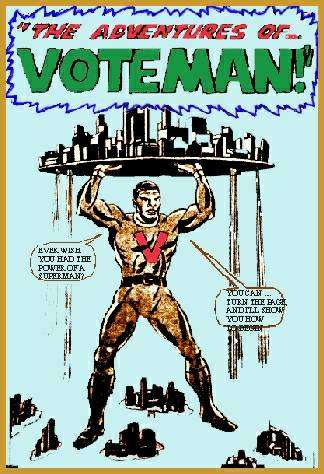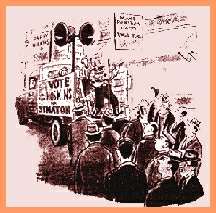10.4c Issue Voting
Often important issues form a litmus test for voting choice. The voters take into consideration the candidates stand on crucial issues like abortion and immigration reform. If this coincides with their own stand, voters are more likely to vote for that candidate. But when two candidates hold the same stance on a particular important issue the voter may find it difficult to choose the right one. Often religion can also become a crucial issue. For example, Kennedy lost a higher number of Southern white Protestant votes than is normal for a Democratic Presidential candidate.
 Click here to enlarge
Click here to enlarge
Exhibit 10.3
Voting Choices
10.4d Alternative to voting
During the 1950s and early 1960s, most African
Americans used political protests since they could not vote. Thus
people marched in large numbers to Washington in a demonstration
for civil rights, which moved President Kennedy to take action against
racial bigotry. Another alternative to voting is civil disobedience
or nonviolent action. For example, sit-ins at restaurants refusing
to serve African Americans or the burning of draft cards by young
men indicated public opinion. Similarly, political violence as an
alternative for the expression of opinion, has been observed as
a recent trend.

"How does he stand on reciprocal
trade agreements? Thatís what I want to know."
Exhibit 10.4
Getting Nominated and Campaigning
|